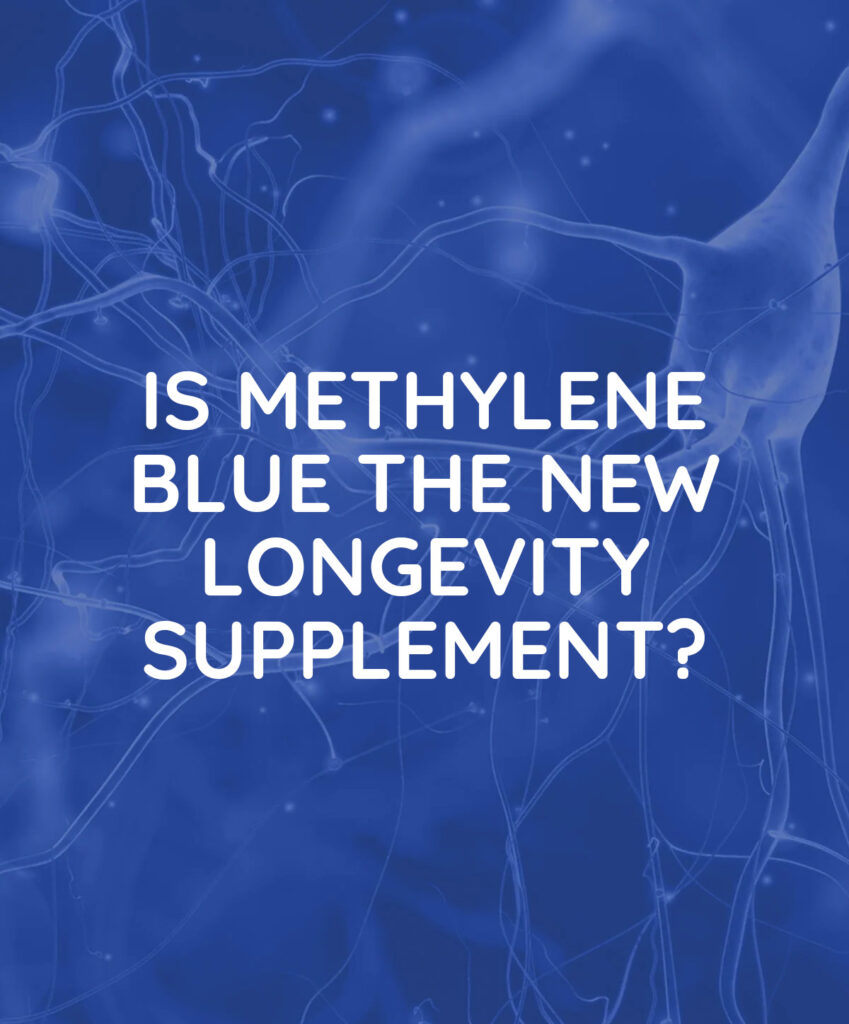
Helping benefit
• Antimicrobial Properties
• Depression/Anxiety Benefits
• Antioxidant Activity
• Neuroprotective Effects
• Enhanced Mitochondrial Function
• Improvement in Cognitive Function
• Treatment of Methemoglobinemia
• Potential Anticancer Properties
• Treatment of Malaria
What is it?
Methylene Blue has been studied for over 140 years and was the first man-made drug in the world and the first ever treatment approved for malaria. It was first synthesized in 1876 by the German chemist Heinrich Caro and was initially developed as a dye for use in textile manufacturing to stain blue jeans blue. Over the last several decades, Methylene Blue has shown some astounding health benefits.
So How Does it Work?
Methylene Blue essentially cycles electrons. By donating electrons to the Electron Transport Chain (ETC), this increases ATP (energy) production within the Mitochondria, which is the body’s Energy Powerhouse. Another way that it works is by inciting glucose metabolism in conditions that increase the amount of NAD+ within the body. The higher the amount of NAD+ the younger your cells stay and more protected it becomes from chronic disease states.
So What are the Other Possible Benefits of Taking Methylene Blue?
Antimicrobial Properties
Methylene blue has been used as an antiseptic and antibacterial agent. It has demonstrated effectiveness against a variety of bacteria, including antibiotic-resistant strains.
Depression/Anxiety Benefits
Methylene blue acts as a potent MAOI, which inhibits the breakdown of Serotonin, Dopamine and Norepinephrine, thus can be extremely beneficial in helping those suffering from low mood or anxiety by preventing the breakdown of these beneficial neurotransmitters.
Antioxidant Activity
Methylene blue acts as a potent antioxidant, helping to neutralize harmful free radicals in the body. This property can protect cells and tissues from oxidative damage, which is implicated in various diseases and the aging process.
Neuroprotective Effects
Research suggests that methylene blue may have neuroprotective properties. It has been investigated for its potential to treat neurodegenerative diseases such as Alzheimer’s and Parkinson’s by protecting neurons from damage and promoting neuronal function.
Enhanced Mitochondrial Function
Methylene blue may improve mitochondrial function, the energy-producing organelles within cells. By enhancing mitochondrial activity, methylene blue may boost cellular energy levels and overall metabolism.
Improvement in Cognitive Function
Methylene blue has shown promise in enhancing cognitive function and memory. It has been studied for its potential to improve learning and memory retention, making it of interest for conditions such as dementia and age-related cognitive decline.
Treatment of Methemoglobinemia
Methylene blue is used medically to treat methemoglobinemia, a condition in which there is an abnormal amount of methemoglobin in the blood, reducing its oxygen-carrying capacity. Methylene blue helps convert methemoglobin back to its normal form, restoring oxygen delivery to tissues.
Potential Anticancer Properties
Some studies have explored the potential anticancer properties of methylene blue. It has been investigated for its ability to inhibit cancer cell growth and induce apoptosis (programmed cell death) in various types of cancer cells.
Treatment of Malaria
Methylene blue has been used historically in the treatment of malaria. While it is not typically used as a first-line treatment today, it has shown efficacy against malaria parasites and is sometimes used in combination therapies.
How is Methylene Blue Typically Administered?
Methylene Blue can be taken orally and intravenously. The safest method is USP (pharmaceutical grade). Always check with your healthcare provider before starting any new treatment or supplement. Most patients take between 10mg – 20mg daily.
